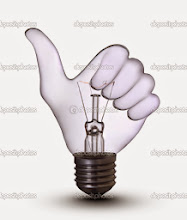Basics of Electrical Drives:
Motion control is required in large number of industrial and domestic applications like
transportation systems, rolling mills, paper machines, textile mills, machine tools, fans, pumps, robots,washing machines etc.
Systems employed for motion control are called DRIVES, and may employ any of primemovers such as diesel or petrol engines, gas or steam turbines, steam engines, hydraulic motors and electric motors, for supplying mechanical energy for motion control. Drives employing electric motors are known as ELECTRICAL DRIVES.
An ELECTRIC DRIVE can be defined as an electromechanical device for converting electrical energy into mechanical energy to impart motion to different machines and mechanisms for various kinds of process control.
Classification of Electric Drives
According to Mode of Operation
1.Continuous duty drives
2.Short time duty drives
3. Intermittent duty drives
According to Means of Control
1. Manual
2.Semi automatic
3.Automatic
According to Number of machines
1. Individual drive
2.Group drive
3.Multi-motor drive
According to Dynamics and Transients
1. Uncontrolled transient period
2.Controlled transient period
According to Methods of Speed Control
1. Reversible and non-reversible uncontrolled constant speed.
2.Reversible and non-reversible step speed control.
3.Variable position control.
4.Reversible and non-reversible smooth speed control.
Advantages of Electrical Drive
1. They have flexible control characteristics. The steady state and dynamic characteristics of
electric drives can be shaped to satisfy the load requirements.
2. Drives can be provided with automatic fault detection systems. Programmable logic controller
and computers can be employed to automatically control the drive operations in a desired.
sequence
3. They are available in wide range of torque, speed and power.
4. They are adaptable to almost any operating conditions such as explosive and radioactive
environments
5. It can operate in all the four quadrants of speed-torque plane
6. They can be started instantly and can immediately be fully loaded
7. Control gear requirement for speed control, starting and braking is usually simple and easy tooperate.
Choice (or) Selection of Electrical Drives
Choice of an electric drive depends on a number of factors. Some of the important factors are.
1. Steady State Operating conditions requirements ,Nature of speed torque characteristics, speed regulation, speed range, efficiency, dutycycle, quadrants of operation, speed fluctuations if any, ratings etc
2. Transient operation requirements Values of acceleration and deceleration, starting braking and reversing performance.
3. Requirements related to the source
Types of source and its capacity, magnitude of voltage, voltage fluctuations, power
factor, harmonics and their effect on other loads, ability to accept regenerative power
4. Capital and running cost, maintenance needs life.
5. Space and weight restriction if any.
6. Environment and location.
7. Reliability.




Post a Comment